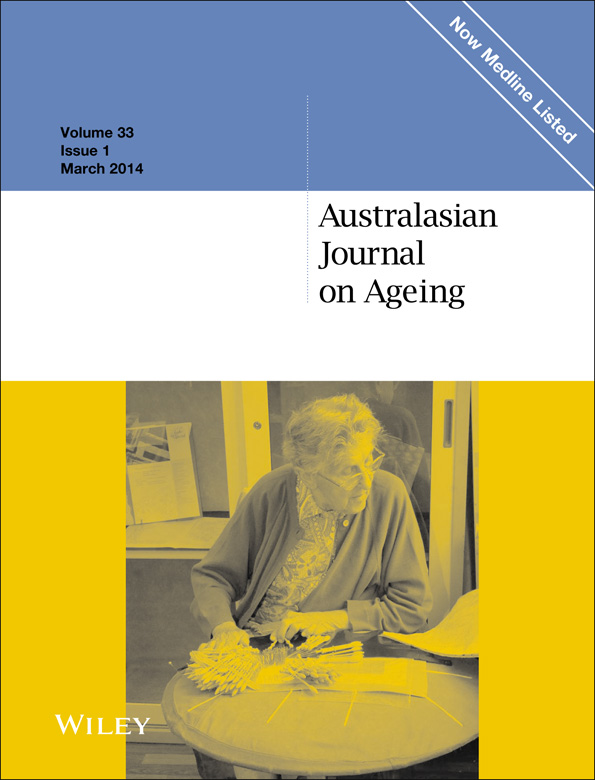Supporting housing and neighbourhoods for healthy ageing: Findings from the Housing and Independent Living Study (HAIL)
Abstract
Aim
To identify the extent to which homes and neighbourhoods of older community-dwelling people are ‘supportive’.
Method
Cross-sectional survey, in-home observation and interviews involving 202 participants (75–79 years). Measures included SF-36 health-related quality of life and Late Life Function and Disability Instrument (LLFDI) scores, and self-reported home usability, access, safety and neighbourhood. Associations between home and neighbourhood characteristics were assessed using χ2-tests, t-tests and Pearson correlations.
Results
Older people rated neighbourhood satisfaction highly (3.0 men, 3.2 women; 4 being the highest score). Many homes failed objective adaptability and safety ratings, particularly bathrooms (80% did not have a shower grab rail, 77% did not have non-slip floors); 27% of homes scored ≥8 of 25 possible hazards. There were significant correlations between perceptions of housing and neighbourhood and SF-36 and disability scores.
Conclusion
Many homes and neighbourhoods may not accommodate increased frailty or disability of older people into the future.




